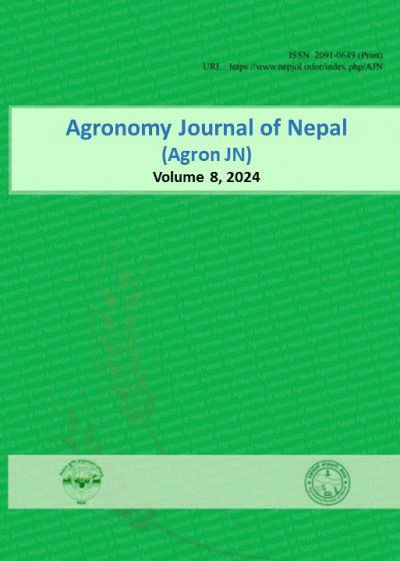Adoption and Impact of Rainwater Harvesting Technology in Nepal
DOI:
https://doi.org/10.3126/ajn.v8i1.70765Keywords:
Rainwater harvesting, Rainfed agriculture, Technology adoption, Treatment-effects, NepalAbstract
The rainwater harvesting (RWH) technology has been introduced to upland farmers in Nepal who have been practicing rain-fed subsistence agriculture. Using cross-sectional household level data from 282 farmers in four districts of Makwanpur, Palpa, Gulmi and Syangja, probit and treatment-effects models were used to identify factors that influence the adoption of RWH and its impact on farm income. The adoption of rain water harvesting was mostly driven by trainings that farmers received while controlling for age, poverty status and off-farm income. The adoption of RWH technology more than doubles household agricultural and livestock income. Instrumental variable approach was used to check the robustness of the findings. Adopters benefited from an increased supply of irrigation water, which allows them to diversify their crops from cereal production to high-value crops during dry season. Given the many weather-related uncertainties faced by rainfed farmers in Nepal, rain water harvesting is potentially a very useful climate adaptation strategy. These results were robust to alternative model specification and estimation method.
Downloads
Downloads
Published
How to Cite
Issue
Section
License
Copyright (c) 2024 Agronomy Society of Nepal (ASoN)

This work is licensed under a Creative Commons Attribution-NonCommercial 4.0 International License.
ASON permits for free use, distribution and reproduction in any medium if the original work is properly cited and not used for commercial purposes.




